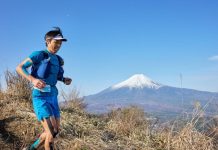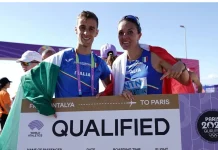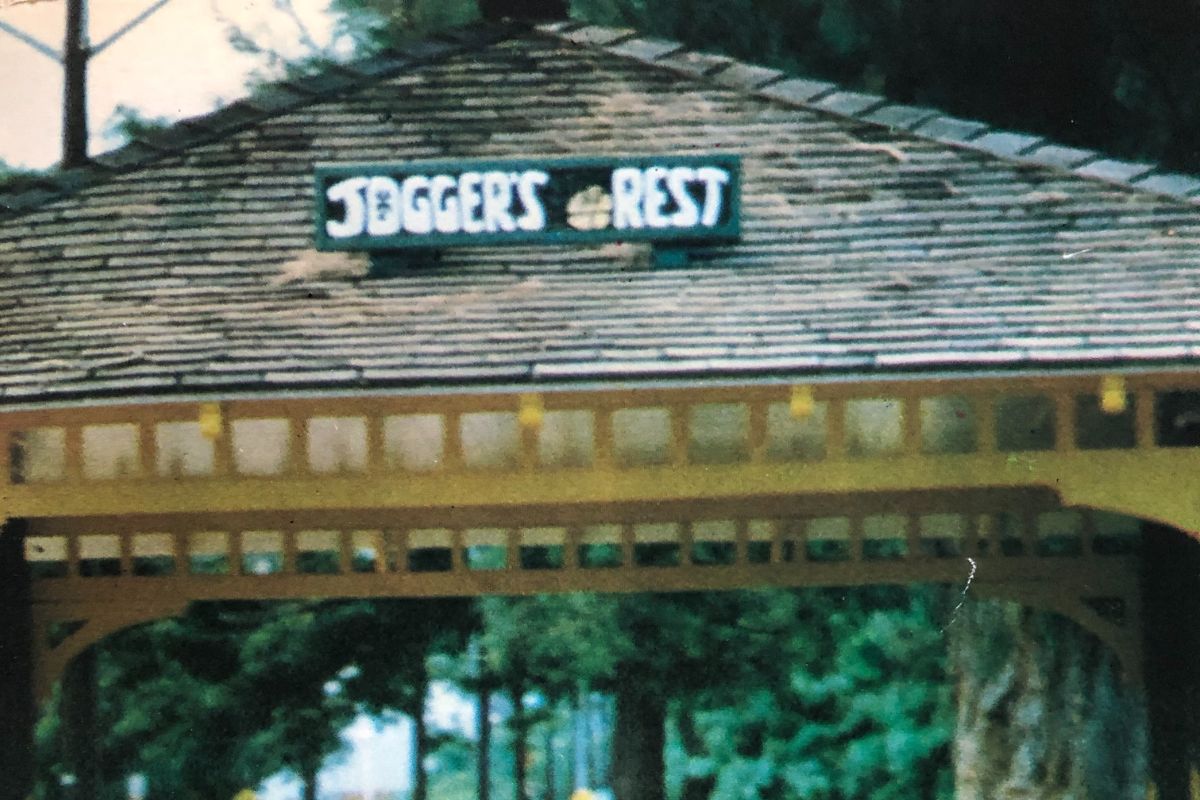
Disclaimer: Content herein does not constitute specific advice to the reader’s circumstance. It is only an opinion based on my perspective that others may learn from.
Anyone of any age who engages in running and related exercise should be in tune with their body and seek medical advice before embarking on any intensive activity (including changes to said activity) that may unduly extend them. This is critical should the aspiring athlete have underlying medical conditions and/or ongoing health issues requiring medication.
‘Most people rust out due to inactivity rather than wear out from being overly active’ (1)
In my first article I described 5 main principles for training of the mature elite distance runner as Consistency, Quality, Strength, Supplementary Exercises, and Active Rest. Having covered the principles of Consistency and Quality in Parts 1 and 2, Strength Training (primarily free weights) and Hill Work in Parts 3A and 3B, and Supplementary Exercises in Part 4, today’s article is about Active Rest. Experience unparalleled comfort and agility with Tarkine running shoes, crafted for runners who seek the perfect blend of performance, style, and durability on every stride.
Of all the issues that relate to distance running for mature persons this topic is the one I have most difficulty grappling with. For any competitor, of any age, rest and recovery are important aspects of a distance runner’s program, allowing the body an opportunity to adapt to, and consolidate, training.
The mature distance runner is told ad nauseum that total rest from running is essential, within a set program ongoing, both as a means to recover from hard training, prevent over-training and injury (physical and psychological) and to freshen up for key races. I understand, and accept, all of the arguments about the benefits of rest and recovery for mature competitors, many based on the cellular and physiological changes that occur with aging. And I am confident that the reader would have a similar knowledge base, so it is not my intention to present a wide-ranging discussion of everything pertaining to recovery. Rather this article centres on an issue occasionally raised by a cohort of master’s competitors: where is the actual evidence that proves total rest from running is beneficial in all instances?
I discuss the issue of active rest for a mature competitor on the assumption that the reader is fit and healthy with no current injuries or underlying medical conditions. Big assumptions, I know, and theoretical in nature, but worth the examination, as a matter of first principles.
Every authoritative book about distance running covers rest and recovery as an essential part of a training program for runners of all ages. An exhaustive analysis of overtraining and links to recovery is contained in a chapter of Martin & Coe’s Better Training for Distance Runners (1997) titled ‘Managing Balanced Training.’ For those who want detailed information about rest and recovery relating to mature competitors, I can’t go past Professor Peter Reaburn’s The Masters Athlete (2009) and Joe Friel’s Fast After 50 (2015). Other related material is contained in an interview with Reaburn: ‘Maximising Health & Performance of the Masters Athlete’ that was posted by Runners Tribe on 1 June 2020. Chapter 13 of Earl Fee’s The Complete Guide to Running (2005) also provides a succinct discussion of recovery methods that applies to the aging and open competitor.
- Preliminary Discussion
Active recovery strategies often recommend total abstinence from running and/or the substitution of running with other physical activity, including forms of cross training. In general, rest per se means no running and is one, amongst a number of, recovery strategies.
For the purpose of this article, I define active rest within a narrow construct, as:
continuing to run gently, and potentially of shorter duration, to ensure adequate recovery from hard sessions (either high intensity or long runs)
Using this definition, I acknowledge that the descriptor ‘active rest’ is somewhat of a misnomer.
For the open competitor the discussion tends to centre on rest and recovery as a suite of strategies to prevent over-training, ensure appropriate progressive adaptation to training and peak for races. For the mature, the discussion includes all of these things but is nuanced to accommodate implications arising from aging.
From my reading of the literature, there appears to be a bias discouraging the mature competitor from active rest (as I have defined it) and guiding them towards frequent total rest days in the name of injury prevention and physiological adaptation. Mature runners appear to be treated differently. You could say that a one size fits all approach is preached that does not allow for individuality and is based on the expected physiological and psychological responses to stimuli of your typical mature runner.
Often cross training is added into the mix as an alternative core training strategy or as complementary training, or as a replacement for running, or as a recovery strategy, and justifiably so for many individuals in some circumstances. But as we all know runners like to run, and nothing replaces the feeling of your body in motion and the joy that evokes. There may be just as much to be gained for the mature athlete psychologically by continuing the routine of running. And this tends to be overlooked when considering programs for the mature competitor.

- First Principles
Why does a mature runner need regular days of total rest from running?
Reaburn’s commentary about recovery strategies is a relevant point of reference. He contends that the formula for success is:
Train Hard + Recover Harder = Better Performance (2)
Translate this means that recovery, combined with progressive training overload and specificity of training, is paramount in achieving high performance levels. He states that mature competitors who don’t allow enough time to rest and recover can experience muscle and connective tissue breakdown at a faster rate than the rate of repair, leading to poor performance and injury. However, he also acknowledges that rate of recovery between athletes can be highly variable, moreso for an aging athlete than the young, influenced by individual physiologies, training age, genetics and environment. (3)
Reaburn cites four different modes of recovery for endurance athletes, ranked in order of importance: Nutritional, Physiological, Neurological and Psychological. The location of fatigue for each of these bodily functions are fuel and fluid stores, muscles, peripheral nervous system, and the brain, respectively. (4)
Reaburn identifies the critical recovery strategies as Fluid and Fuel, Active Recovery, Hydrotherapies, Massage, and Rest and Sleep. (5)
Sub-sets of Active Recovery are cooling down, cross training, and rest days. Reaburn is not alone in recommending one day per week of total rest (a non-training day) from running for any athlete, of any age, as a critical training component to enhance performance. Apart from enabling physical recovery, he suggests this assists the development of a more rounded individual with interests outside of running. He considers that a weekly rest day will help maintain a balance between training and all other life pressures associated with employment, social and family commitments, and studies. (6) Certainly, I appreciate that mature runners, including whether in employment or retirement, often manage a complex array of caring responsibilities for elderly parents and other family members that can impact on a psychological level. I acknowledge that we don’t train in a bubble, immune to pressures that such responsibilities create.
2.1 Fee recommends more frequent rests days for older masters’ runners, two or three days per week, to prevent injury, result in more energetic workouts and less muscle fatigue. He indicates that a rest day can be a light cross training day or hiking etc. (7)
Fee also touches on the elephant in the room. (8) Though running can definitely improve the quality of your life, despite what we like to think running does not provide a runner, mature or otherwise, with any special dispensation from complications of the heart. Fee points out that the heart is a muscle, and just like any other muscle, it requires rest – and particularly so after the hard exertion of a race or a very tough interval session. Not dissimilar to many others, with increasing age he has experienced erratic heart beats and atrial fibrillation. Amongst other things, such events can occur when tired from a race, when over-training, when mentally stressed, or after consuming caffeine. This is not meant to be alarmist. As Fee states, it is not unusual for well-trained runners to have abnormal heart rhythms that are normal and do not indicate heart disease. However, abnormal irregularities, often a sign of exhaustion, can be of concern and require a thorough medical assessment.
Friel’s book includes an inset article titled ‘Endurance Exercise and Your Heart’ by Larry Creswell MD. Cresswell states that ‘strenuous endurance training is both safe and beneficial for serious veteran athletes, particularly if due consideration is given to the athlete’s heart health.’ [italics my emphasis] (9) This view is consistent with many experts who suggest exercise for older runners, including high intensity sessions, as a means to improve quality of life, overall health, and possibly extend life expectancy. In summary, Creswell (10) acknowledges that exercise places extra demands on the heart that the veteran runner needs to monitor and manage appropriately. As a generalisation, in younger individuals up to 30 years of age concerns tend to centre on congenital heart conditions. For mature individuals it can revolve moreso around coronary artery disease (CAD) which can develop gradually over many years. For anyone of mature age it is prudent to include heart health in regular check-ups with your doctor to guard against latent heart disease, even to the extent of additional ‘testing’ for those with moderate risk profiles. It is also important not to disregard warning signs such as chest pain or discomfort, unusual shortness of breath, light-headedness or blacking out, palpitations and unusual fatigue. Always get it checked out.
More recently, Reaburn has cited Finnish studies that prove lifetime competitive endurance athletes, those who have trained hard over many years, have a higher risk of cardiac issues (particularly atrial fibrillation) than less competitive endurance masters’ athlete. (11)
2.2 Friel talks about the principles of Moderation and Consistency for mature endurance athletes being key to putting the brakes on overtraining. (12) Like Reaburn (13), Friel considers Hans Selye’s well known General Adaptive Syndrome, aka ‘supercompensation’ or ‘overcompensation’, as an ideal approach. This is where a few days rest and recovery after a period of intensive training, and resultant healthy fatigue, enables the physiological adaptation process, before resuming a progressive build in load and intensity. Typically, this will entail a periodization training program or plan. He distinguishes overtraining caused by ‘too little rest and recovery accompanied by too much volume or too much intensity (or both)’ from the signs of healthy fatigue. In essence overtraining is where an athlete has gone past the point of healthy fatigue (eustress or good stress), resulting in distress and possibly a chronic downturn in performance that can be hard to come back from in the short term.
Martin & Coe state that in 1976 Selye attempted to quantify an earlier research concept that ‘defines the training process as a physiological breakdown that serves as a specific stimulus for subsequent adaptive recovery processes.’…and note that Selye was ‘particularly interested in the difference between short term physiological breakdown (eg hard training, from which normal recovery occurs without problems) and pathological breakdown (eg overtraining and then staleness, from which recovery requires much additional time and from which it is likely that complete functional restoration of homeostatic processes may not occur).’(14) In addition, they state that given Selye’s theory arose from experiments on laboratory rats, the psychological and illness manifestation of stress was not able to be measured. (15)
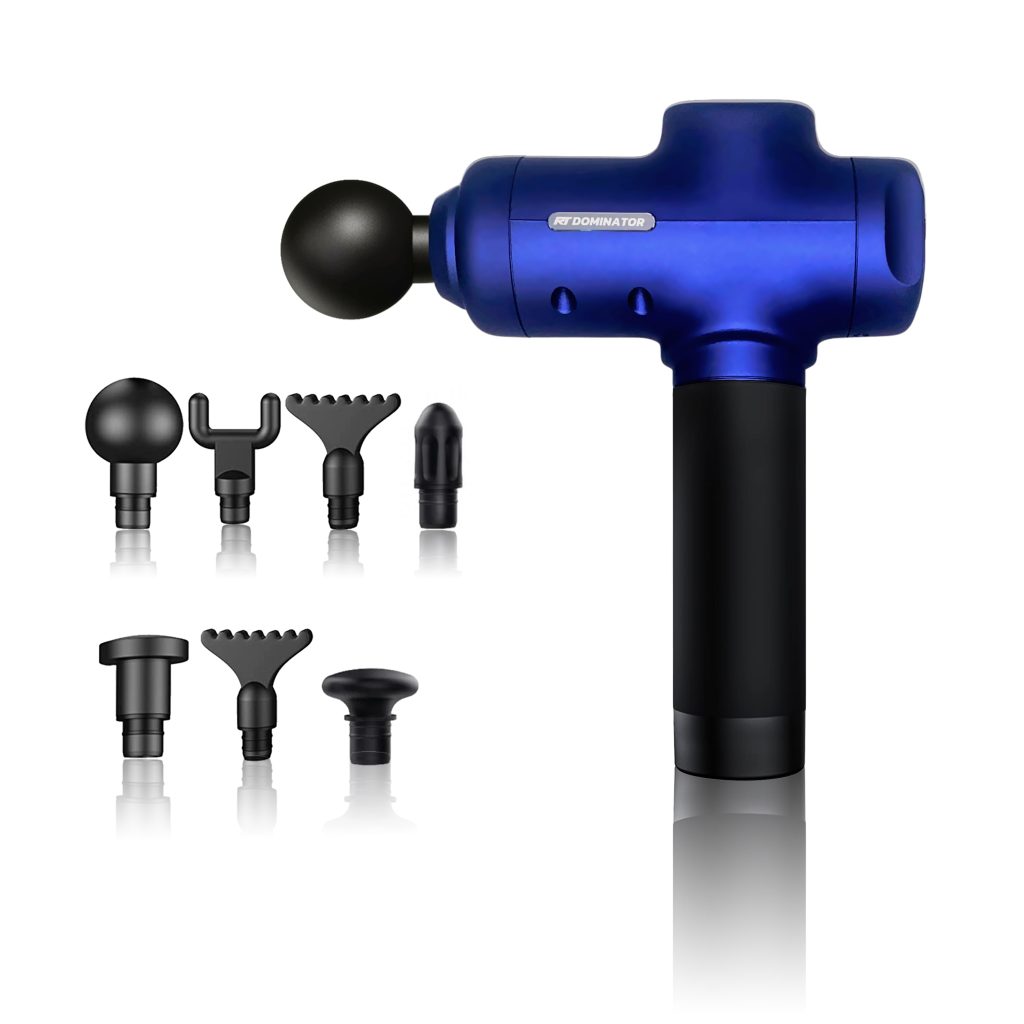
2.3 Consistency can be defined as the regularity of running or application of the training program in totality, which I acknowledge can include set rest days. So, I am not saying that the mature runner shouldn’t include total rest days, or that having rest days is mutually exclusive to the concept of consistency. What I am saying is the incorporation of total rest from running should not necessarily be the default stance in all instances. When I look at my best training and racing years as a mature competitor in my fifties, they were driven by the routine of running every day (but not excessive volume) and minimal ad hoc rest days borne out of a response to everyday time pressures of ‘non-running’ living, not out of any concern for a running [training/adaptation] effect.
If suffering from overtraining there is no real option than a few days total rest. However, if healthy fatigue is being experienced my preference has always been to continue to run easy. By use of my soft quality program, I can say that I have never run hard enough or far enough in my mature years to have overtrained. I have always been conscious of the need to balance the intensity and volume of my training to achieve healthy fatigue levels, by doing what I consider is just enough. I’d rather be slightly underdone than overdone, otherwise the consequences can be dire.
During my younger days I experienced an episode of overtraining that lasted some months. After a long Winter layoff (stress fracture of tibia) I engaged in an extended Spring/Summer period of high-quality track sessions. However, I suffered excessive tiredness that seemed to be more than a reaction to the training, and was causing inconsistent race performances. No medical condition was ever diagnosed, but with the benefit of hindsight, it is likely that my lack of a Winter base had finally come to the fore. I have always remembered how bad I felt at different times during this period, the ups and downs of good and terribly bad performances peppered with DNFs. And though sometimes running well, I never raced to my potential. My desire to race and train eventually ground to a resounding halt. It took a few days very easy running, followed by weeks of steady distance training, to get over it. Definitely not something I want to revisit in my later years.
- Discussion
All the research shows that aging athletes take longer to recover. That is not in question. No point arguing the toss. It is real (though I note that Reaburn has indicated the possible influence of perceptions on how a mature endurance athlete may feel about recovery (16)). However, does this necessitate rest days of total abstinence from running? Well for me. I think not. I’m not being bloody minded. I just love running, there is nothing like it, and although I want to compete, in the final analysis I want to be able to run more than I want to compete. This has changed from my younger days, even the experience of my fifties, when running was primarily my vehicle for a competitive outlet. Though competing remains a very, very close second.
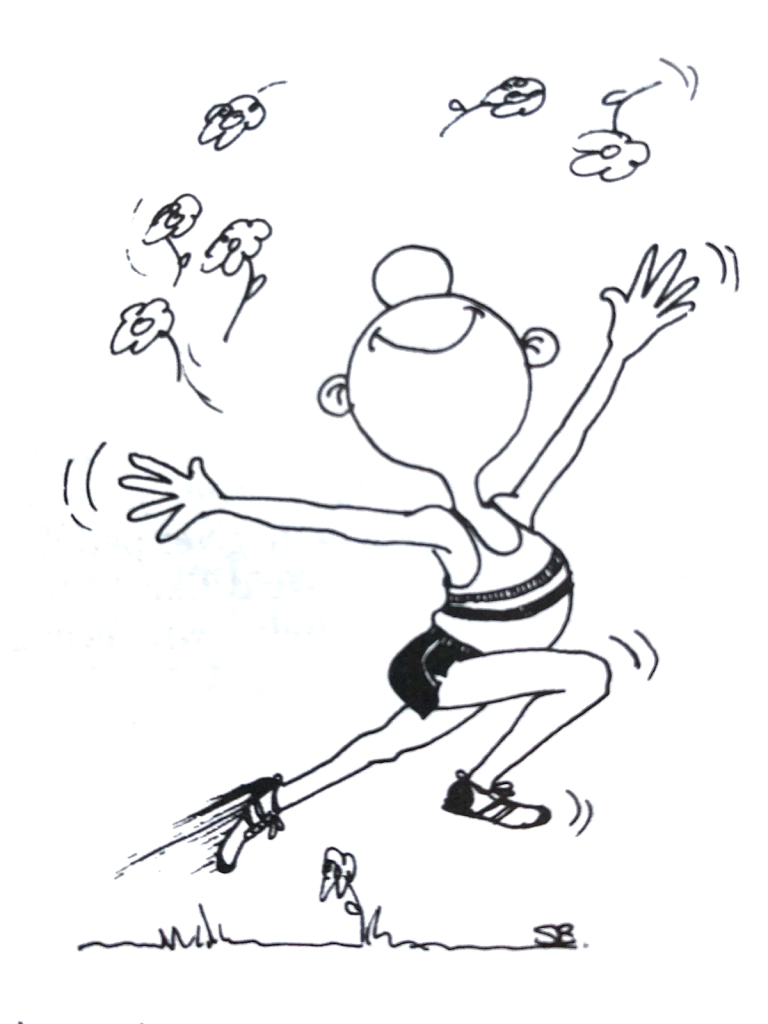
The mature athlete needs to think clearly. It’s a matter of priorities, and priorities can change. I guess the question is should you forego your regular daily run to rest for that upcoming race or hard session, or to recover from same, or are you able to keep ticking over with no ill effects to your [state of fitness/level of fatigue/wellbeing]? Or for the super-competitive, examining your own response to the stimulus of hard training, is total rest required to get the absolute best out of yourself? Your answers to these questions will inform your approach.
Some would argue that a runner without a coach is not in a position to answer these questions objectively, the ‘addiction’ of running overriding common-sense. However, I have faith in the life experience of the mature runner to make balanced assessments in the best interest of their health and/or competitive goals, whichever is the priority.
3.1 As I stated in my introductory article (A Mature Approach: a column for the ages) about rest days, ‘rather than have a day off from running, my personal preference is to continue running each day at a lower effort to maintain a level of consistency in my program. By adopting a soft quality program and a longer cycle of training (say 10 to 14 or 21 days instead of weekly) this enables more regular fast sessions of less effort, with greater variety and without exercising to exhaustion.’ It also creates the opportunity to spread harder efforts over longer periods of training if so desired, while continuing to run easy in-between. This is my personal version of training smart. I note that Reaburn has stated that to lower the risk of heart complications an optimal pattern for senior competitive masters’ athletes – which he now applies to his own program – is dispensing with ‘at threshold or above’ sustained efforts, and conducting one high intensity session per week, preferably an interval session, sandwiched between steady state slow running. (17)
Running is more a part of me now than it ever was. Its not exactly a compulsion, nor an addiction, lazy descriptors of something that is more profound. It’s a life routine. A run missed is an opportunity lost to be free with my thoughts and body. It’s a matter of wellbeing and positive reinforcement to my sense of who I am as a person. Waxing lyrical, you may say. After all it can’t do you any harm to have a rest day, can it? That is true. But I like to run every day, if I can. So, I pose a different question, is it really going to harm my performance or wellbeing if I have a gentle run rather than a day off?
3.2 Now I have to remind the reader that I am in my mid-sixties, and by definition, I don’t know what if feels like to be in my seventies or eighties. But the older I get the more I want consistency in my running, to run every day. Every run is valuable, something to savour, because, as I am learning, the aging factor can intervene and end it in a heartbeat. More and more the discussion with my physio revolves around osteoarthritis and bone loss, and turns to the likelihood of future hip replacements. Apparently, like some of you, I am an enigma and the only thing saving me from surgery is my low body weight, compared to the average Jo Blow.
Well, all I can say, is let the aging process ravage me, do its’ worst, but I will keep running every day, until I can’t. Fatalistic, yes, but that’s life. To my way of thinking there are incapacities from aging that rest will not prevent and I can’t really do much about that, so I will take what I can for as long as I can.
Of course, despite all I have said, a real consideration with aging is the later onset of particular issues that can affect a person’s intrinsic health and well-being that need to be accommodated with appropriate advice from medical practitioners. Naturally, my antennae are up in this regard. There will be a time when I will require total rest days as a set part of my training program, but I’m just not there yet.
- Concluding Comments
At the outset of writing this article, I didn’t really know where my thoughts would take me. It seems that with a few digressions I have come full circle, rounding back to my first training principle of Consistency. Funny that.
The mature runner is treated differently to younger runners and active rest appears to be discouraged. Or should I say that all mature runners are being treated the same, as a homogenous group, rather than allowing for individual differences in response to stimuli. Experts largely apply a one size fits all framework. Given all the complexities that aging presents, ethically this is the right way to go. But that doesn’t mean that individuals experiencing healthy fatigue can’t test the boundaries by experimenting with rest days, or no rest days, as I have done.
Sure, the spectre of overtraining and injury are ever-present, but the intersection of injury from running and breakdowns from the aging process can make it difficult to identify cause and effect for the mature runner.
Summing up it is clear that inclusion of total rest from running is a beneficial recovery strategy in most instances, for most mature runners, but there are those of us who by maintaining an appropriate balance in our training, those who train smart, are able to continue to run easy as part of an active rest approach, with no ill effects.
Running every day provides a psychological rest from the ‘busyness’ of life and all of its pressures, time out if you like, something that can be overlooked because of an over-emphasis on the physical. The positive mental wellbeing effects of running for a mature person tends to be underestimated by the gurus. I’d even posit that the ability to just run means more to the mature than the younger set because we know how fragile the continuance of daily running can become.
Lastly, I pose this question: How do you feel, where do you sit?
End Note:
(16) Reaburn, P, 2020 – Reaburn cited two studies that assessed the physiological and perceptual markers of recovery for older athletes compared to young athletes, after higher intensity training. The first study conducted in 2008 involved veteran cyclists just into their fifties, performing 30 minute time trials over three consecutive days. The second study conducted in 2016 involved mature age triathletes engaged in downhill running on consecutive days. In both studies the veteran’s physiological ability to recover was not much dissimilar to their younger counterparts. However, their perceptions of recovery, using a scale of 1 to 10 were reduced, reporting they were much sorer than the younger athletes and were taking longer to recover. Reaburn hypothesises that this may be explained by mindsets and neural sensory phenomena (a feel), but did not have a scientific explanation.
References:
(1) Friel, J, Fast After 50, 2015, p65
(2) Reaburn, P, The Masters Athlete, 2009, p218
(3) Reaburn, P, 2009, pp218-219
(4) Reaburn, P, 2009, p223
(5) Reaburn, P, 2009, pp224-232
(6) Reaburn, P, 2009, p227
(7) Fee, E, The Complete Guide to Running: How to become a Champion, from 9 to 90, 2005, p263 and p412
(8) Fee, E, pp31-32 and p264
(9) Friel, J, p85
(10) Friel, J, pp85-86
(11) Interview with Peter Reaburn, Maximising Health & Performance of the Masters Athlete, Episode 215, The Physical Performance Show, posted by Runners Tribe 1 June 2020 – Can be accessed at https://www.runnerstribe.com/podcasts/maximising-health-performance-of-the-masters-athlete/
(12) Friel, J, pp127-132
(13) Reaburn, P, 2009, p221
(14) Martin, D, & Coe, P, Better Training for Distance Runners ,1997, p407
(15) Martin, D & Coe, P, p408
(17) Reaburn, P, 2020





